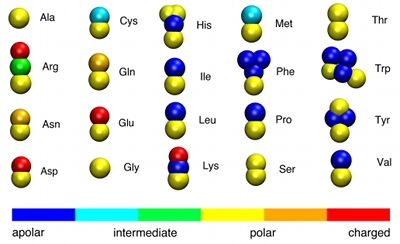
MARTINI force field development
Collaborations: S.J. Marrink (U. Groningen, the Netherlands), G. Rossi (U. Genoa, Italy)
A large number of biologically relevant motions involve relatively large systems,
with lateral size of tens of nanometers, and occur on time scales of tens of microseconds.
Those length and time scales are currently difficult to reach in molecular simulations at the atomistic level.
Coarse-grained descriptions of the systems allow faster simulations
and still retain many important properties of molecular systems.
Over the past years I worked at the extension of the MARTINI coarse-grained
force field to peptides and proteins [1], in collaboration with Prof. Siewert-Jan Marrink
(U. Groningen, the Netherlands).
Then I extended the force field to carbon nanoparticles, such as fullerene and carbon nanotubes,
in collaboration with Prof. Peter Tieleman (U. Calgary, Canada).
In recent years I collaborated with Dr. Giulia Rossi at the development of MARTINI models
for various polymers, such as polystyrene, an industrial polyester, and polyethylene glycol.
More development in this area is ongoing.
[1] Monticelli et al., J. Chem. Theory Comput. (2008), 4, 819-834.
|